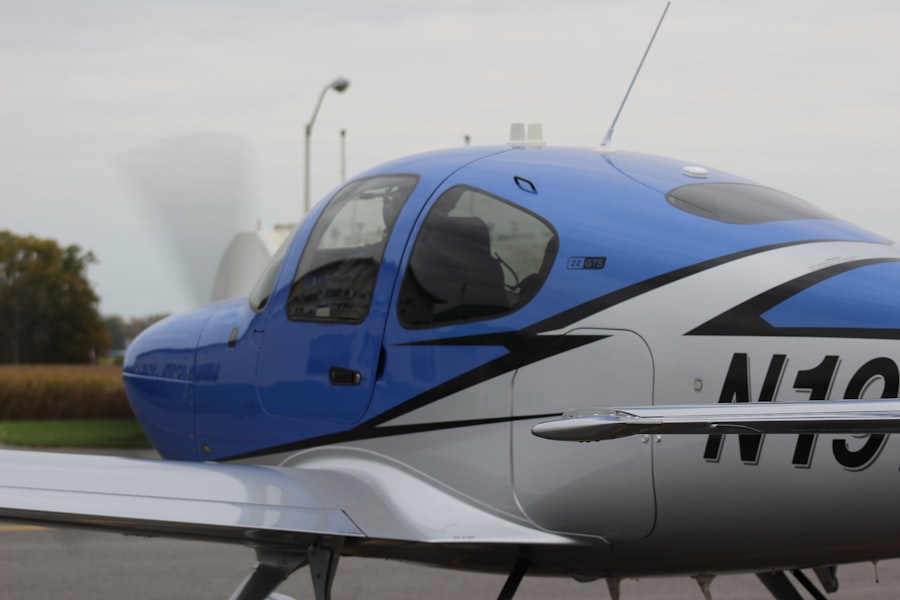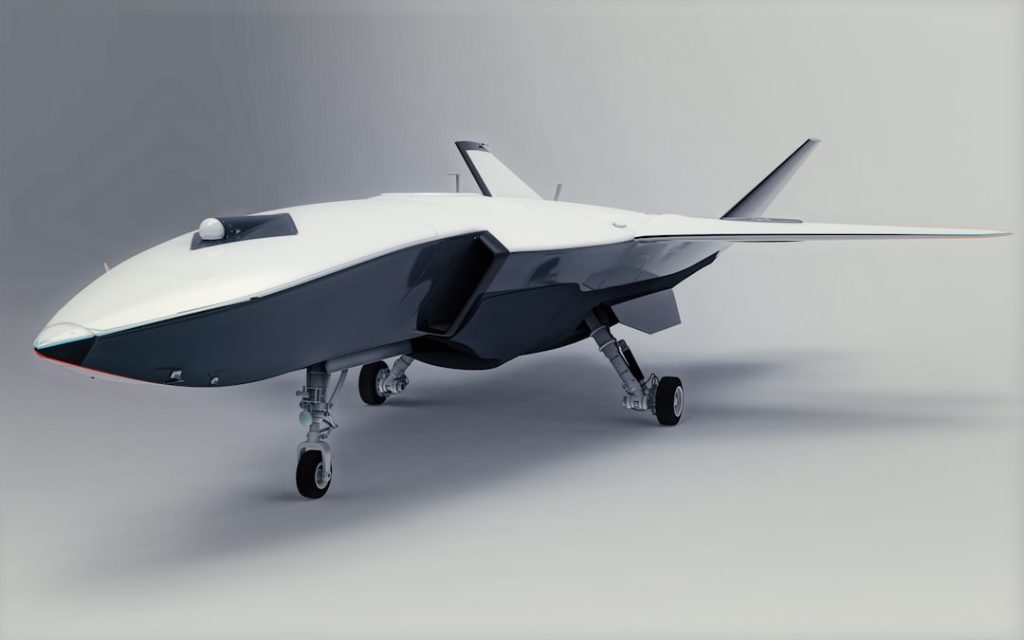The aerospace avionics market represents a critical segment of the broader aerospace industry, encompassing a wide array of electronic systems and equipment that are essential for the operation, navigation, and control of aircraft. Avionics, a portmanteau of “aviation” and “electronics,” includes systems such as flight control, communication, navigation, and monitoring systems. As air travel continues to expand globally, the demand for advanced avionics systems has surged, driven by the need for enhanced safety, efficiency, and operational capabilities.
The integration of sophisticated technologies into avionics systems has not only improved aircraft performance but has also transformed the way pilots interact with their aircraft. The market is characterized by rapid technological advancements and increasing investments in research and development. As airlines and manufacturers seek to modernize their fleets and improve operational efficiency, the avionics sector is witnessing a shift towards more integrated and automated systems.
This evolution is further fueled by regulatory requirements for safety and environmental standards, compelling manufacturers to innovate continuously. The aerospace avionics market is thus positioned at the intersection of technology and aviation, making it a focal point for stakeholders looking to capitalize on the growth potential within this dynamic industry.
Key Takeaways
- The aerospace avionics market is a crucial component of the aviation industry, encompassing electronic systems used in aircraft for communication, navigation, and monitoring.
- The market is experiencing significant growth and trends driven by increasing demand for modernization of aircraft, rising air passenger traffic, and advancements in technology.
- Key players in the aerospace avionics market include major companies such as Honeywell International Inc., Thales Group, and Rockwell Collins, with intense competition driving innovation and product development.
- Technological advancements in aerospace avionics are focused on enhancing safety, efficiency, and connectivity, with developments in areas such as digital avionics, synthetic vision systems, and unmanned aerial vehicles.
- Market segmentation and regional analysis reveal a growing demand for aerospace avionics in regions such as North America, Europe, and Asia-Pacific, with military and commercial aviation sectors driving market growth.
Growth and Trends in Aerospace Avionics Market
The aerospace avionics market has experienced robust growth over the past decade, with projections indicating that this trend will continue in the coming years. Factors contributing to this growth include an increase in air traffic, the modernization of aging aircraft fleets, and the rising demand for unmanned aerial vehicles (UAVs). According to industry reports, the global aerospace avionics market was valued at several billion dollars in recent years and is expected to grow at a compound annual growth rate (CAGR) of over 5% through the next decade.
This growth trajectory is indicative of a broader trend towards digitization and automation within the aviation sector. One of the most significant trends shaping the aerospace avionics market is the increasing adoption of advanced technologies such as artificial intelligence (AI), machine learning, and big data analytics. These technologies are being integrated into avionics systems to enhance decision-making processes, improve predictive maintenance capabilities, and optimize flight operations.
For instance, AI algorithms can analyze vast amounts of flight data to identify patterns that may indicate potential mechanical issues before they become critical. This proactive approach not only enhances safety but also reduces operational costs for airlines by minimizing unscheduled maintenance and downtime.
Key Players and Competition in Aerospace Avionics Market

The aerospace avionics market is highly competitive, with several key players dominating the landscape. Major companies such as Honeywell International Inc., Rockwell Collins (now part of Collins Aerospace), Thales Group, and Garmin Ltd. are at the forefront of innovation in this sector.
These companies invest heavily in research and development to create cutting-edge avionics solutions that meet the evolving needs of airlines and aircraft manufacturers. Their extensive product portfolios include everything from flight management systems to advanced cockpit displays and communication equipment. In addition to established players, the market also sees the emergence of new entrants and startups that focus on niche segments or innovative technologies.
For example, companies specializing in UAV avionics are gaining traction as the demand for drones in commercial applications grows. This influx of new competitors fosters an environment of innovation, pushing existing players to enhance their offerings continually. Strategic partnerships and collaborations are also common in this industry, as companies seek to leverage each other’s strengths to develop comprehensive solutions that address complex aviation challenges.
Technological Advancements in Aerospace Avionics Market
| Technological Advancements | Impact |
|---|---|
| Advanced Flight Management Systems | Improved navigation and fuel efficiency |
| Next-Generation Communication Systems | Enhanced connectivity and data transfer |
| Advanced Cockpit Displays | Enhanced situational awareness for pilots |
| Integrated Modular Avionics | Reduced weight and power consumption |
Technological advancements are a driving force behind the evolution of the aerospace avionics market. One notable development is the transition from traditional analog systems to digital avionics, which has revolutionized how aircraft systems operate. Digital avionics offer enhanced reliability, improved data processing capabilities, and greater integration among various systems.
For instance, modern glass cockpits equipped with digital displays provide pilots with real-time information on flight parameters, navigation data, and system status, significantly improving situational awareness. Another significant advancement is the integration of satellite-based navigation systems such as Global Positioning System (GPS) into avionics. GPS technology has transformed navigation by providing precise location data that enhances route planning and fuel efficiency.
Additionally, advancements in communication technologies have led to the development of satellite communications (SATCOM) systems that enable real-time data exchange between aircraft and ground control. This capability is particularly valuable for long-haul flights over oceans or remote areas where traditional communication methods may be limited.
Market Segmentation and Regional Analysis of Aerospace Avionics Market
The aerospace avionics market can be segmented based on various criteria, including application, platform type, and region. In terms of application, avionics systems are utilized in commercial aviation, military aviation, business jets, and UAVs. The commercial aviation segment holds a significant share of the market due to the increasing number of air travelers and the need for airlines to enhance operational efficiency.
Regionally, North America dominates the aerospace avionics market, driven by the presence of major aircraft manufacturers and a well-established aviation infrastructure. The United States is home to several leading avionics companies that contribute significantly to research and development efforts. However, other regions such as Asia-Pacific are witnessing rapid growth due to rising air travel demand and increasing investments in aviation infrastructure.
Countries like China and India are expanding their aviation sectors, leading to increased procurement of advanced avionics systems.
Challenges and Opportunities in Aerospace Avionics Market

Despite its promising growth trajectory, the aerospace avionics market faces several challenges that could impact its development. One significant challenge is the stringent regulatory environment governing aviation safety standards. Compliance with these regulations requires substantial investment in testing and certification processes, which can be time-consuming and costly for manufacturers.
Additionally, the rapid pace of technological change poses a challenge for companies striving to keep up with evolving customer expectations while ensuring their products meet regulatory requirements. On the other hand, these challenges also present opportunities for innovation and growth within the market. The increasing focus on sustainability in aviation is driving demand for eco-friendly avionics solutions that reduce fuel consumption and emissions.
Companies that invest in developing green technologies or retrofitting existing aircraft with energy-efficient systems stand to gain a competitive advantage. Furthermore, as air travel continues to expand globally, there will be increased opportunities for avionics providers to enter emerging markets where aviation infrastructure is still developing.
Future Outlook and Projections for Aerospace Avionics Market
Looking ahead, the future of the aerospace avionics market appears promising, with several trends expected to shape its trajectory over the next decade. The ongoing digital transformation within the aviation industry will likely accelerate the adoption of advanced avionics technologies. As airlines seek to enhance operational efficiency and improve passenger experiences, there will be a growing demand for integrated systems that offer seamless connectivity between aircraft and ground operations.
Moreover, the rise of urban air mobility (UAM) presents new opportunities for avionics manufacturers. As cities explore innovative transportation solutions such as air taxis and drones for cargo delivery, there will be a need for specialized avionics systems tailored to these applications. This shift towards UAM could open up entirely new markets for avionics providers willing to adapt their offerings to meet these emerging demands.
Conclusion and Recommendations for Investing in Aerospace Avionics Market
Investing in the aerospace avionics market presents a compelling opportunity for stakeholders looking to capitalize on a sector poised for growth. Given the increasing demand for advanced technologies that enhance safety, efficiency, and sustainability in aviation, companies that prioritize innovation will likely thrive in this competitive landscape. It is essential for investors to conduct thorough market research to identify key players and emerging trends that could influence their investment decisions.
Furthermore, strategic partnerships with technology firms specializing in AI or data analytics could provide a competitive edge in developing next-generation avionics solutions. As regulatory frameworks continue to evolve, staying abreast of compliance requirements will be crucial for ensuring successful product development and market entry. By focusing on these areas, investors can position themselves favorably within the dynamic aerospace avionics market as it continues to evolve in response to technological advancements and changing consumer demands.


